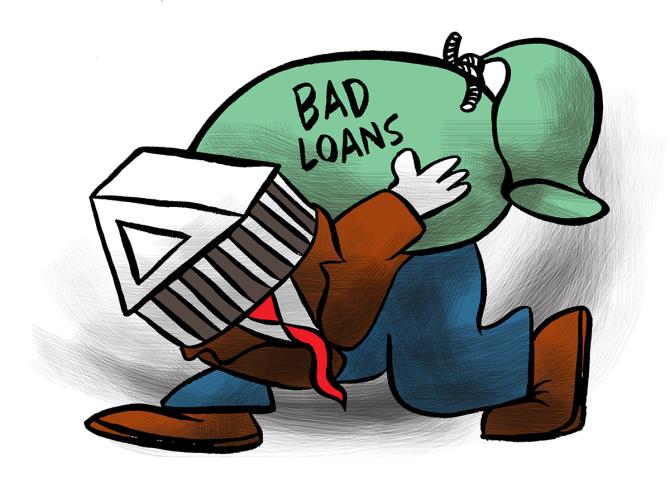Commercial banks in the country continued with their improving asset quality trend in the October-December 2021 quarter with slippages remaining under control coupled with healthy recoveries and upgradation of asset classification.

The 28-listed banks reported improvement in bottom line with net profits rising 64.1 per cent year-on-year (YoY) and 21.5 per cent sequentially.
This is mostly on account of a fall in provisions and contingencies.
The net interest income (NII) was Rs 1.38 trillion in Q3 of FY22, up 9.7 per cent YoY and 5.9 per cent sequentially.
However, other income moderated to Rs 52,261 crore, down 3.1 per cent YoY and 6.5 per cent sequentially as hardening of bond yields dented gains from treasury books.
Among the lenders that had announced their earnings for the third quarter, a majority of them reported lower gross and net non-performing asset (NPA) ratios and substantial decline in bad loan provision.
For these 28 banks, gross NPAs declined sequentially by 3.5 per cent to Rs 7.44 trillion in December 2021.
However, they rose by 1.5 per cent over December 2020.
Last year, banks did not tag defaulting loans as NPA due to stay from the Supreme Court.
After rising since the start of the last decade, gross NPAs of the banks started to decline after reaching a peak in March 2018 when it touched 11.5 per cent.
Gross NPA ratio has come down to 6.9 per cent as of end September 2021, according to Reserve Bank of India (RBI) data.
The number is expected to come down further in the December quarter, analysts said.
“Across the banks, we have seen that fresh slippages are coming down and gross and net non-performing ratios have improved,” said Asutosh Mishra, head of research — institutional equity at Ashika Stock Broking.
Provisions and contingencies declined by 40.2 per cent YoY and 12.6 per cent sequentially in Q3 of FY22.
“Credit costs are also down on a sequential basis. It is coming down for the banking system as a whole since the last three to four quarters,” Mishra told Business Standard.
State Bank of India (SBI), for example, reported a sharp sequential decline in fresh slippages in the third quarter to Rs 2,334 crore as compared with Rs 4,176 crore in Q2 and Rs 15,666 crore in Q1.
With all asset quality trends of SBI showing improvement, analysts expect lower credit costs in the near term, given the current provision coverage ratio (71.2 per cent without advances under collection account) and provision buffer that could translate into strong earnings growth.
Most banks have also reported healthy operating income during the quarter though there was some disappointment on non-interest income.
This is because of hardening bond yields, which impacted treasury income.
In addition, there was no significant recovery from cases from the bankruptcy courts.
This is unlike the last quarter, when there was recovery from the resolution of Dewan Housing Finance Co.
“The growth momentum has accelerated in Q3 of FY22,” Motilal Oswal said in a report on the third quarter earnings of commercial banks.
“Loan growth has accelerated in Q3 of FY22, led by a sharp pick-up in the corporate portfolio.
"Growth in retail, business banking, and the SME (small and medium enterprises) segment remained healthy,” the report said.
Analysts said while operating income growth during the October-December 2021 quarter was healthy, there were some disappointments on other income.
“Loan growth has seen substantial improvement, on a sequential basis, across banks, which is a positive.
"Banks have also accepted that cost of funds have bottomed out,” Mishra added.
Credit growth of scheduled commercial banks had accelerated to 9.2 per cent YoY by the end of December 2021 after breaching 7 per cent in November 2021, for the first time since April 2020.
State Bank of India and Bank of India are some of the public sector banks that have revised their loan growth target for the current financial year upward, after the encouraging December trends.











